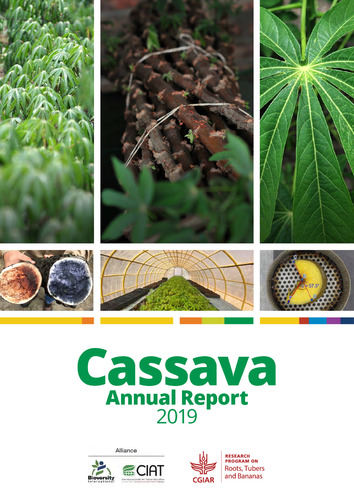Cassava Annual Report 2019
Latin America is home to cassava, nature’s gift to humankind, which has helped to mitigate hunger in sub-Saharan Africa and extreme poverty in Southeast Asia. The Alliance of Bioversity International and the International Center for Tropical Agriculture (CIAT) has supported cassava farmers for nearly five decades since CIAT created its Global Cassava Program in the early 1970s, prioritizing cassava research on the Latin American germplasm to provide solutions to the crop’s production and sustainability challenges in its home as well as in Africa and SEA, working with partners such as the International Institute of Tropical Agriculture (IITA). 50 years on, the Program continues to deliver on its initial objective, embracing the challenges outlined in the United Nations’ Sustainable Development Goals which guide its theory of change path to deliver impact.
The Global Cassava Program is now part of the Crops for Nutrition and Health research area at the Alliance of Bioversity and CIAT. The Alliance recognizes cassava’s role in generating farmers’ income in poverty-stricken regions. Therefore, during 2017 and 2018, the Program created a multidisciplinary work plan across six Research and Service Areas (RSAs), strategically aligned to best respond to the demands of our main stakeholders. The CGIAR Research Program on Roots, Tubers and Bananas (CRP-RTB), USAID, BMGF, HarvestPlus, ACIAR, as well as public (i.e., EMBRAPA, INIA, and AGROSAVIA) and private organizations (i.e., INGREDION and TTDI) are primarily interested in: 1) better cassava varieties, 2) access to clean planting materials, 3) monitoring and surveillance of pests and diseases, 4) improved farming and postharvest practices, and 5) the development of sustainable cassava value chains to unlock new cassava market growth.
The Cassava Annual Report 2019, documents the Program’s research achievements over last year. In the report, you will find the remarkable results achieved by the Cassava Program during 2019 in improving access to germplasm-based solutions under the six Research and Service Areas that support our theory of change to deliver solutions to our end-users.

